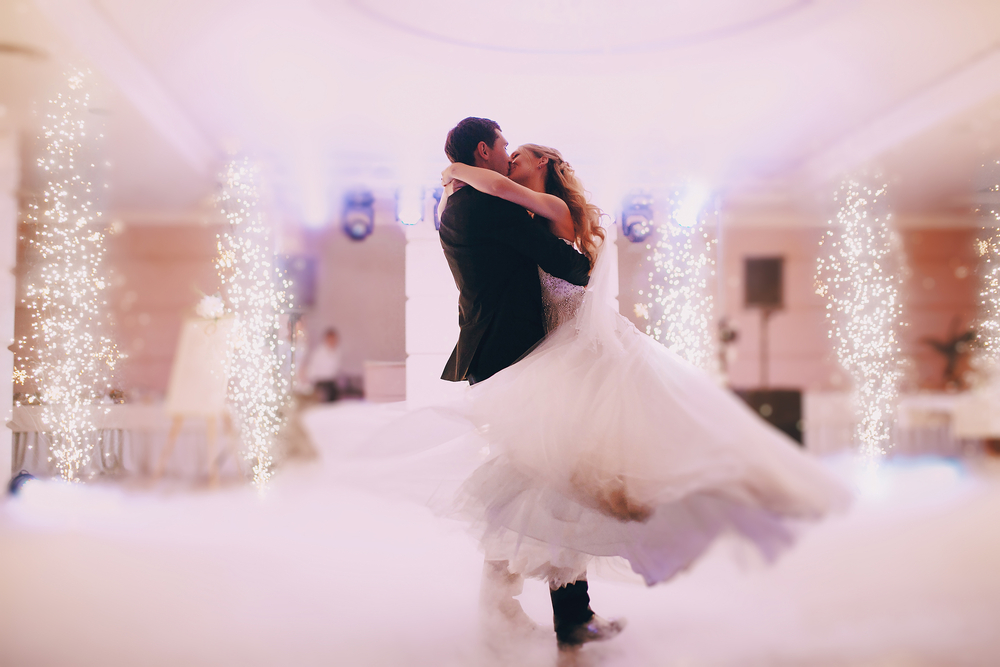THE SOUNDTRACK TO YOUR WEDDING

When did music become such an intrinsic part of the wedding ceremony? What did the bride and groom do before the likes of Wagner and Mendelssohn came along? Aimee Britton explores the history of the wedding singer and offers a useful insight into how you can plan the soundtrack to your wedding.
Here comes the bride…
Music forms such an important part of so many aspects of the wedding. With a requirement for songs throughout the ceremony and reception, there’s a lot to think about. But when did music become so integral?
It has been intrinsically linked with weddings for centuries, affording this tradition a further gravitas. Music during the ceremony owes its prominence to hymns in church services and wedding services in other religions worldwide. The first dance originated from 16th century balls, in which the guests of honour would host the first dance. This seamlessly translated to weddings, forming many couples’ favourite wedding moments right up to the present day.
Processional songs prior to the mid-19th century were often chosen based on a couple’s favourite composer, such as Strauss, Beethoven or Bach, with no one individual managing to emerge as a clear favourite. That was, however, until the emergence of two new compositions that have since been wildly popular for more than a century and a half: Wagner’s 1850 Bridal Chorus (more commonly known as “Here Comes the Bride”) and Mendelssohn’s 1842 Wedding March.
The monopoly on this tradition began in 1858, when both songs were used in the wedding of Princess Victoria Adelaide Mary Louise and Frederick William IV of Prussia. Interestingly, neither piece was written for a wedding –Mendelssohn’s Wedding March was composed for a production of Shakespeare’s A Midsummer Night’s Dream, while Wagner’s Bridal Chorus serenades a colossally ill-fated marriage from his opera Lohengrin. This high profile wedding was impressive for a number of reasons, but these lasting traditions are the most steadfast.
However, with an entire world of wedding songs to enter your venue to, more couples are opting to walk in to something a little less conventional. Typically, processional songs are still relatively slow, as couples wish to savour the moment. But with your processional song introducing the personality of the bride and the couple together, pick a song that speaks to who you are, and what you want your wedding to be.
Many modern couples favour the beautiful Glasgow Love Theme from the popular 2003 rom-com Love Actually. For something a little more upbeat, couples often opt for Marry You by Bruno Mars, a fitting and fun introduction to a ceremony. For the unconventional bride, you’re sure to make an entrance with a rap song that features a heavy beat. The recessional song is the one that you leave the venue to as a married couple. Often, a more upbeat song is chosen than the slow and reverent processional entrance, signalling the start of the celebrations.
Bands, solo artists & DJs – Oh my!
There is a great deal of options for entertainment at your wedding. The average wedding has music at the ceremony, cocktail hour and reception. You can mix and match between bands, soloists and DJs, or just stick with one choice for the entire day. There are bands to suit different genres of music, but many feature an eclectic back-catalogue, so that all guests will find something they like. Many bands are also welcoming to requests for your set list, so that you can influence the tone as you would choose.
Popular wedding bands and soloists are often booked more than a year in advance, so if you already have a particular band in mind; contact them at your earliest convenience with your wedding date and venue to see if they’re available. From here, you can discuss their usual set list, make any requests, and start coordinating when and where they can set up and sound check. Another aspect worth considering is if you or your future spouse plays an instrument, it might be fun to get up on stage and perform a song or two.
Best foot forward
Dancing has long been a part of weddings worldwide. Many Indian weddings have featured a traditional Bhangra since its rise to prominence in the mid-20th century. Western weddings often feature a first dance between the married couple, a dance with the bride and her father, the groom and his mother, and many variations upon the bride and groom with their guests. All of these are flexible, with some couples sticking just to the first dance.
For the first dance, you might already have a song in mind. It might be a waltz to the most romantic song you can both think of. It might be a dance-off to a mutual favourite jam, or a show-stopping performance of a song that makes you (and inevitably, your guests) laugh. An emerging trend sees couples beginning a slow, romantic dance, before an abrupt change of music into a fun, contemporary and theatrical dance number.
We’d recommend investing in some dance lessons regardless of your choice, to boost your confidence and make lasting memories for you and your guests. On average, couples tend to have anywhere between one and 10 lessons, to cover basic steps or fully choreographed routines.
If you wish to have dances with family members, think about a song that reminds you of them. It’s a really nice idea to choose the song together, just as you have with your spouse, and this is one key way that you can help family members feel included in the wedding and its planning. If you remember singing a particular song with your mum or dad, ask if they’d like to dance to it with you.
If you and your sibling do a frankly unmatched rendition of Me and My Shadow by Frank Sinatra, Dean Martin, and Sammy Davis Jr, (please) grace your guests with a performance. Once again, choreography and dance packages are available for family members too, so this might be worth considering if you have time and you’d both enjoy it. Even if your song isn’t slow or significantly romantic on the surface, it is the songs that have a real sentimental value that make your wedding so special for everyone involved.
Track One
Does my venue have a sound limiter?
Be sure to find this out when you book the venue. Some venues will have provisions to prevent noise complaints in place after a certain time. A sound limiter will be set to a certain decibel limit, and if the noise level exceeds this for more than a set number of seconds, power to the room will be cut, causing a major disruption to your reception. Most wedding bands or DJs will be able to work around a sound limiter, staying within the decibel limit, but they will need to know as soon as possible.
Track TWO
What music can I have at my religious ceremony?
Some Churches or other religious venues will have a set list of songs that you can use within your ceremony. These may include hymns and other religious lyrics. Talk to the leader of your ceremony to find out what you may include.
Track Three
How big is my space?
Depending on your venue, you may wish to consider different entertainment options. One soloist in a massive ballroom will struggle to be heard in your ceremony, as will a 10 piece band within a cosy reception venue. Is your venue equipped for sound equipment? A rural barn wedding might require a different option. Look logistically at your venue to work out your next step.
Track Four
Who would you recommend?
When looking for a wedding band, do a Google search on your favourite genres of music. Make use of the other people involved in organising your wedding. Caterers, photographers and wedding planners will all have attended many weddings, making them the best people to ask for recommendations.
Track Five
Sign on the dotted line:
Once you’ve chosen a band or DJ, you need to work out the particulars of fees including travel, expenses, and overtime. Discuss when you wish the music to play, whether breaks can be included during the meal or speeches, and what kind of mood you want the entertainment to set at different times. Also, discuss whether the band will bring their own equipment, and how long they will need to set up.

